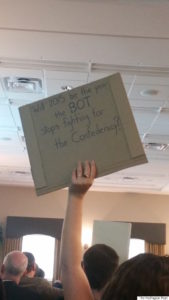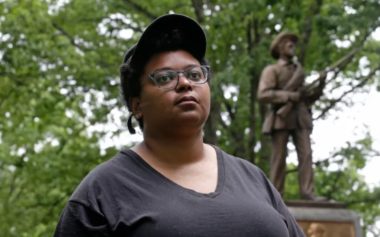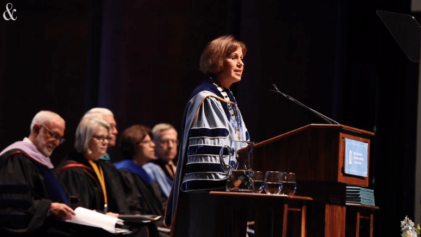There has been an onslaught of criticism hurled at the generation of millennials, but when issues of racism and police brutality captured national attention, young college students across the nation answered the call for a new wave of activists.
College students all across the nation used social media platforms to collectively call for justice in the name of unarmed teen Michael Brown when he was gunned down by Ferguson police officer Darren Wilson.
Medical students launched #WhiteCoats4BlackLives following the death of unarmed Staten Island father Eric Garner, which sparked nationwide die-ins at universities like Duke and Yale.
More recently, students at the University of Virginia became a united front after fellow student Martese Johnson became the latest Black victim of police brutality.
Despite claims that social media would rot their brains or lead to their demise, college students of all races have utilized the tools they have today and the power of their collective voices to create tangible changes and widespread movements and spark national discussions.
A group of students at the University of North Carolina at Chapel Hill has become the latest collective student body fighting for changes at their university in the name of equality.
The UNC students are demanding that the school rename Saunders Hall, which is named after William Saunders.
Saunders is a Confederate colonel who eventually became a chief organizer for the Ku Klux Klan in North Carolina.
The push to rename the building is an old one for the students who have been suggesting name changes for years.
“For a very, very long time, students were not responded to by the administration, but I think that’s because they were trying to figure out how to navigate ‘touchy’ subjects,” one student activist, Omolulu Babatunde, told The Huffington Post.
This year, they are hoping the school will make the decision to rename the building in honor of Zora Neale Hurston, the first Black student at the school prior to integration.
Perhaps even more admirable, however, is the fact that the students have taken the school’s entire racist history into consideration as they demand changes on campus.
In addition to renaming the building, the students are urging the school to be more open and honest about the university’s dark past.
They are calling for a plaque to be installed near the campus’s “Silent Sam” Confederate soldier monument.
Back in 1913 when the monument was unveiled, a tobacco manufacturer actually credited the Confederacy with protecting the “Anglo-Saxon race,” The Huffington Post reported.
Students once placed nooses around their necks in protest as they stood next to the “Silent Sam” monument with signs that read, “This is what Saunders would do to me.”
By adding more historical context to such monuments, students are hoping that it will generate discussions about racism and force more people to realize that the very university that dons such statues wouldn’t have been in existence without Black people enduring centuries of slavery and oppression.
Despite years of lackluster responses from school officials, this year’s push for change has finally captured the board of trustees’ attention.
On Wednesday, the board launched a website for students and other locals to share their thoughts and opinions on renaming the building.
So far, the university claimed it met with more than 200 UNC community members to discuss the “touchy” issues that had long been ignored.

“The critique isn’t necessarily about the building name or about UNC in general,” said one student activist who is also an organizer behind the school’s Real Silent Sam Coalition. “It’s about what is a student of color’s place on campus.”
Another Real Silent Sam Coalition member, Tasia Harris, mirrored those sentiments.
Harris pointed to the incidents all across the nation that prove how racism thrives on college campuses, in police departments and everywhere in between.
She noted that many people look at the SAE fraternity members or the Ferguson police officers and label these groups as “random, racist people” when that’s far from the case.
“No, these are people taking actions on the foundation set by Saunders,” Harris said.
Changing the name of a building or adding a plaque won’t change the university’s racially charged history. This is something the students know all too well.
What these changes can do, however, is encourage the university to pay attention to issues of race and race relations on campus and beyond. It can keep students aware of the gruesome realities of slavery and serve as a reminder that what happened hundreds of years ago is still impacting Black people even today.
That’s something that UNC Trustees Vice Chair Alston Gardner is welcoming with open arms.
“This is the time to face the issues of race and place,” he said, according to The Huffington Post. “We embrace the discussion and we believe the university is a fantastic venue for that — much better than Starbucks and a 45-second conversation with your barista.”




